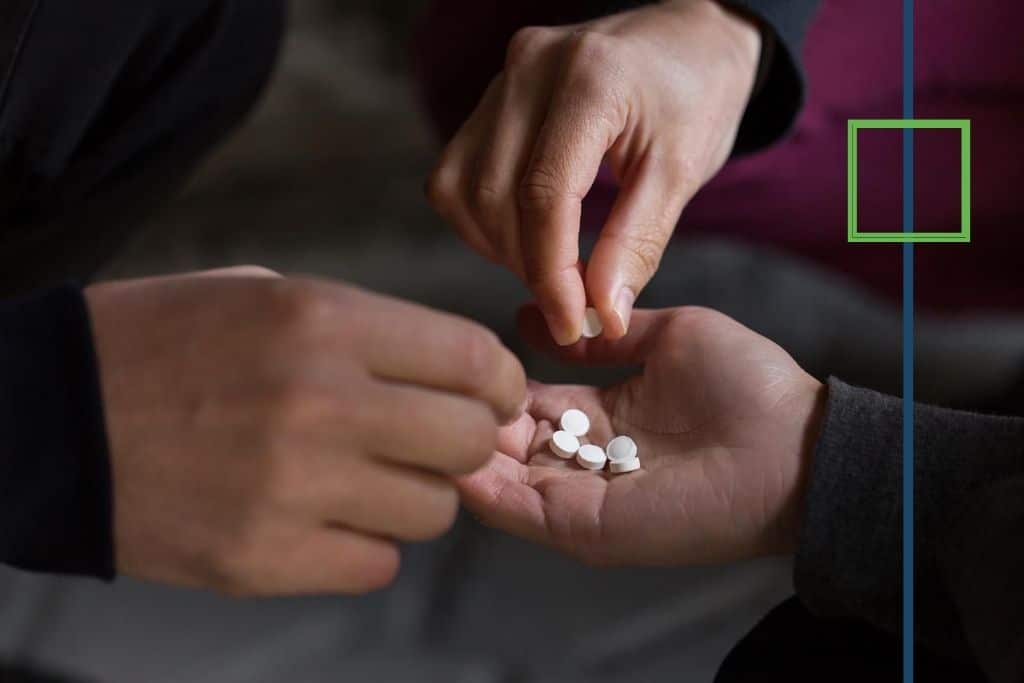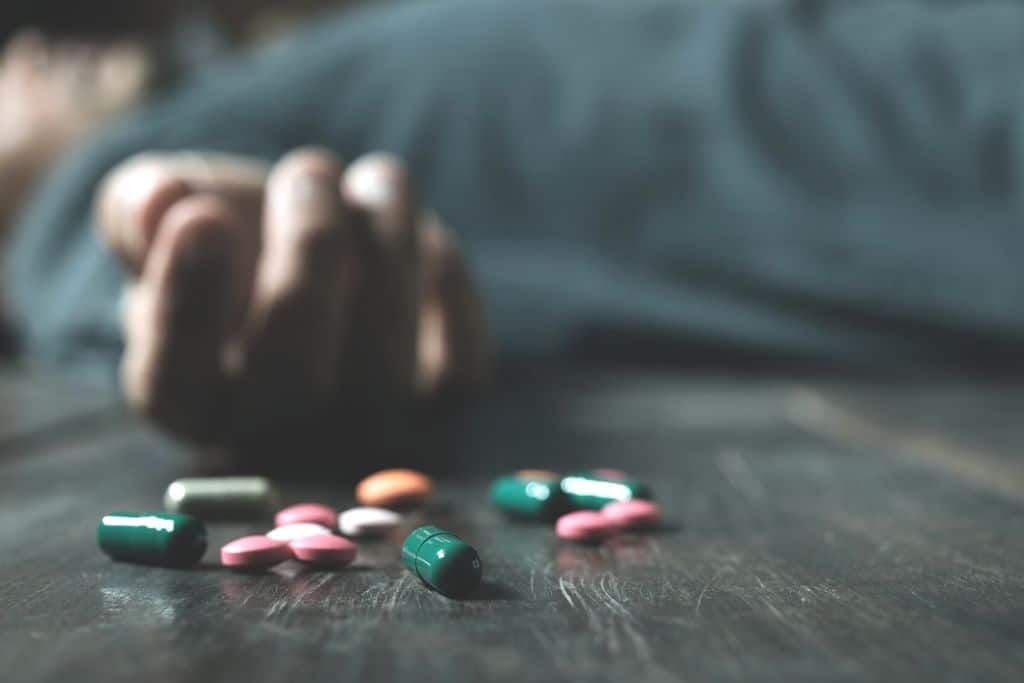What is MDMA?
According to the National Institute on Drug Abuse, Methylenedioxy-methamphetamine (MDMA) commonly known as Molly, is a synthetic drug that alters mood and perception (awareness of surrounding objects and conditions). It is chemically similar to stimulants and hallucinogens, producing feelings of increased energy, pleasure, emotional warmth, and distorted sensory and time perception.
It was initially popular in the nightclub scene and at all-night dance parties (“raves”). But the drug now affects a broader range of people, commonly called Ecstasy or Molly. [1] Its chemical structure is similar to amphetamines, such as methamphetamine and a hallucinogen called mescaline. Mescaline is the active ingredient in the drug peyote.
The unique chemical structure of MDMA causes both hallucinogenic and stimulant effects, such as bursts of energy, changes to how time is perceived, and sensitivity to touch. Ecstasy and Molly come in pills, capsules, and powder. They’re well-known club drugs that are popular at music festivals. [2]
In 2016, an estimated 2.4 million people reported using ecstasy, according to the National Survey on Drug Use and Health published in September 2017. [3]
How is MDMA or Molly used?
People who use MDMA usually take it as a capsule or tablet, though some swallow it in liquid form or snort the powder. The popular nickname Molly (slang for “molecular”) often refers to the supposedly “pure” crystalline powder form of Methylenedioxy-methamphetamine , usually sold in capsules. However, people who purchase powder or capsules sold as Molly often actually get other drugs such as synthetic cathinones (“bath salts”) instead (see “Added Risk of MDMA”). Some people take Molly in combination with other drugs such as alcohol or marijuana.
Is there a Difference Between Ecstasy, MDMA, and Molly?
In the past, Molly referred to a more pure form of MDMA than ecstasy. But pure forms of MDMA are rare in the United States. Today, Molly and ecstasy may be used interchangeably as street names for MDMA. Most people who buy the drug know it’s mixed with other unknown substances. Studies have found that ecstasy tablets contain multiple substances in addition to Molly.
Some of these substances included caffeine, ketamine, methamphetamine, PCP, cocaine, and heroin. Ecstasy is rarely used alone. Most individuals combine it with alcohol, marijuana, or other substances. Mixing Molly with other drugs can exacerbate the effects of both substances

Effects Of Regular MDMA Use
Sleep disturbances, lack of appetite, concentration difficulties, depression, heart disease, and impulsivity have been associated with regular use of Methylenedioxy-methamphetamine. In addition, heavy MDMA use over two years is associated with decreased cognitive function. Some of these disturbances may not be directly attributable to MDMA. Still, they may be related to other drugs often combined with Molly, such as cocaine, alcohol, or marijuana, or to contaminants commonly found in MDMA tablets.
Effects on the brain
MDMA increases the activity of three brain chemicals: [1]
- Dopamine: produces increased energy/activity and acts in the reward system to reinforce behaviors.
- Norepinephrine: increases heart rate and blood pressure, which are particularly risky for people with heart and blood vessel problems.
- Serotonin: affects mood, appetite, sleep, and other functions. It also triggers hormones that affect sexual arousal and trust. The release of large amounts of serotonin likely causes the emotional closeness, elevated mood, and empathy felt by those who use MDMA.
Other health effects include:
- Nausea
- Muscle cramping
- Involuntary teeth clenching
- Blurred vision
- Chills
- Sweating
MDMA’s effects last about 3 to 6 hours, although many users take a second dose as the effects of the first dose begin to fade. Over the week following moderate use of the drug, a person may experience:
- Irritability
- Impulsiveness and aggression
- Depression
- Sleep problems
- Anxiety
- Memory and attention problems
- Decreased appetite
- Decreased interest in and pleasure from sex
Molly or MDMA stays in your system a couple days after the last dose, may be detectable in urine for up to three to five days, can be found in your blood up to two days after last use, same in saliva, as well.
Some of these effects may be due to the combined use of MDMA with other drugs, especially marijuana.
High doses of Methylenedioxy-methamphetamine can affect the body’s ability to regulate temperature. This can lead to a spike in body temperature that can occasionally result in liver, kidney, or heart failure, or even death.
In addition, because Molly can promote trust and closeness, its use—especially combined with sildenafil (Viagra®)—may encourage unsafe sexual behavior. This increases people’s risk of contracting or transmitting HIV/AIDS or hepatitis.
Acute and Sub-Acute Effects
People use ecstasy to feel happy, energetic and disconnected from reality. Others use it to feel the drug’s hallucinatory effects. It can change how people perceive time. It also affects vision and hearing.
Acute Effects
A person may experience the intoxicating effects of MDMA within 45 minutes or so after taking a single dose. Those effects include an enhanced sense of well-being, increased extroversion, emotional warmth, empathy toward others, and a willingness to discuss emotionally charged memories. In addition, people report enhanced sensory perception as a hallmark of the MDMA experience. However, MDMA can also cause several acute adverse health effects. For example, while fatal overdoses on MDMA are rare, they can potentially be life-threatening—with symptoms including high blood pressure (hypertension), faintness, panic attacks, and in severe cases, a loss of consciousness and seizures. [2]
Sub-Acute Effects
Recreational use of MDMA is often characterized by repeated drug taking over several days (binges), followed by periods of no drug-taking. In one animal study, this pattern of use produced irregular heartbeat (arrhythmia) and heart damage. In addition, in the week following the use of the drug, many people report depression, impaired attention and memory, anxiety, aggression, and irritability. [2]
Side Effects
- Anxiety
- Depression
- Loss of Consciousness
- Seizure
- High Blood Pressure
- Confusion
- Paranoia
- Panic Attacks
Many people use ecstasy in risky situations, such as in dance clubs or at music festivals. They’re more likely to be malnourished, dehydrated, and sleep-deprived in these settings. Using Molly in risky situations also increases the likelihood of overdosing.
What is Molly? Overdose Symptoms
Overdosing on Molly is rarely deadly, according to the National Institute on Drug Abuse but it can cause serious health problems, including fever, liver damage, kidney problems, and cardiovascular failure. Other signs of an MDMA overdose include panic attacks, seizures, and faintness. In addition, mixing Molly with alcohol or other drugs increases the risks of severe side effects, such as a dangerous rise in body temperature. [1]

Is MDMA Addictive?
While the drug appears to have addictive properties, research hasn’t concluded how addictive ecstasy is. However, it affects the same areas of the brain as other addictive drugs, according to NIDA. [1] In addition, animal studies show that MDMA causes drug-seeking behavior, but animals seek it less often than they desire other addictive drugs. Some evidence indicates that Methylenedioxy-methamphetamine affects parts of the brain in charge of self-control, pleasure, and reward.
Unfortunately, researchers know little about how Molly affects the brain. As a result, their understanding of how other drugs lead to addiction is broader. On the other hand, people who use Molly have reported classic symptoms of addiction, including cravings, tolerance, and withdrawal symptoms, and some continue to use the drug despite negative consequences.
Treatment for MDMA Dependence and Addiction
Ecstasy is one of the less addictive stimulants and one of the more addictive hallucinogens. The number of people who listed ecstasy as their primary reason for going to rehab in 2015 was comparable to the number for all other hallucinogens combined, according to the 2005-2015 Treatment Episode Data Set by the Substance Abuse and Mental Health Services Administration—in contrast, more than 60 times as many people sought treatment for methamphetamine addiction than ecstasy addiction that year. [3] No medications are available for the treatment of stimulant addiction. That is why NIDA recommends cognitive behavioral therapy and support groups for people struggling to quit Molly.

MDMA Therapy in California, reclaim your life from Molly Addiction
MDMA Addiction is a condition that can cause major health, social, and even economic problems that should not be taken lightly. We Level Up Treatment Center can provide you, or someone you love, the tools to recover from MDMA Addiction with professional and safe treatment. Feel free to call us to speak with one of our counselors. We can inform you about this condition and give you the clarity to questions such as “What is Molly?” by giving you relevant information. Our specialists know what you are going through. Please know that each call is private and confidential.
Sources
[1] National Institute of Drug Abuse – ‘MDMA (Ecstasy/Molly) DrugFacts’ | NIDA (drugabuse.gov)
[2] We Level Up Treatment Center – ‘What Is Molly Addiction’
[3] Substance Abuse and Mental Health Services Administration (www.samhsa.gov)
